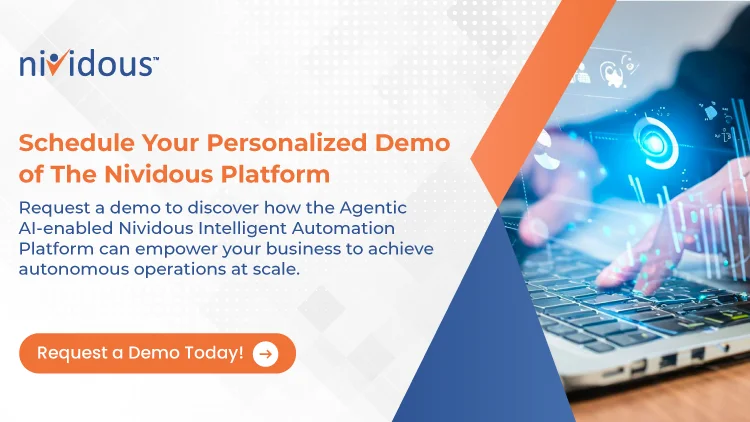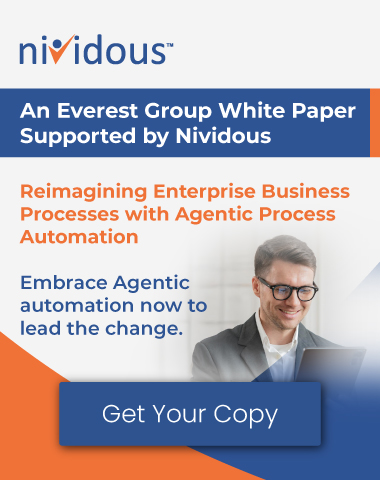Healthcare leaders are navigating immense pressure to improve outcomes, reduce costs, and deliver more personalized care while grappling with staff shortages, regulatory complexity, and rapidly evolving technologies. Traditional diagnostic systems, while powerful, are often siloed, reactive, and overly reliant on human bandwidth.
Agentic AI is changing that. These intelligent, goal-oriented systems can interpret data, pursue diagnostic objectives, and collaborate with human teams, making faster, more accurate, and context-aware decisions. In diagnostics, where minutes matter and precision saves lives, Agentic AI is emerging as a transformational force.
The Shift from Automation to Autonomous Diagnostics
Most AI systems in healthcare today offer pattern recognition, highlighting anomalies in imaging or surfacing predictive alerts. These systems are reactive, providing decision support when prompted.
Agentic AI introduces something radically different: autonomous diagnostic agents that can initiate actions, integrate insights across modalities, and refine their approach based on patient-specific data and outcomes. They work toward clinical goals, not just tasks.
Rather than waiting for input, an agentic AI agent might:
- Flag suspicious imaging results
- Order follow-up tests
- Check patient history for contraindications
- Alert physicians based on pre-defined escalation rules
- Monitor lab systems for updates and trigger care pathways
Agentic AI in healthcare is not about replacing clinical judgment. It is about amplifying it with context-rich, proactive intelligence that supports faster, safer decisions.
AI Diagnosis in Healthcare Is More Than Support Tools
Many hospitals have already adopted basic AI tools for diagnostics, such as computer vision for radiology or NLP models for pathology reports. These offer interpretive assistance, but they lack workflow awareness or autonomous intent.
With agentic AI, the diagnostic process becomes collaborative rather than sequential. Agents can take on tasks like:
- Cross-validating lab values with imaging results
- Detecting conflicting indicators in the EHR
- Proactively escalating patients who meet sepsis risk thresholds
- Tracking response to treatment over time and suggesting adjustments
This enhances AI diagnosis in healthcare by embedding intelligence into the diagnostic loop rather than simply providing data points. Human clinicians remain in control with more foresight, fewer blind spots, and less administrative burden.
Practical Benefits of AI in Healthcare Diagnostics
For hospital executives, the promise of agentic AI in healthcare extends far beyond improved accuracy. It delivers measurable impact across performance metrics, compliance standards, and workforce optimization, driving better care delivery and long-term sustainability for the organization.
Accelerated Time-to-Treatment
Agentic AI systems act as digital collaborators that shorten the window between symptom recognition and medical intervention. Whether prioritizing stroke victims in the ED or flagging early signs of infection during intake, these agents orchestrate faster clinical responses by coordinating data, initiating diagnostics, and triggering workflows. This acceleration reduces patient risk and improves critical time-to-treatment metrics that directly affect outcomes and reimbursements.
Reduced Diagnostic Error
Diagnostic decisions often rely on fragmented data from multiple systems. Agentic AI synthesizes complexity in real time by simultaneously reviewing imaging, lab values, genomics, and patient history. These agents reduce the likelihood of missed or delayed diagnoses by catching discrepancies, correlating symptoms across modalities, and prompting second-level checks when inconsistencies arise. The result is fewer repeat visits, lower litigation risk, and greater clinician confidence.
Optimized Staff Utilization
With staffing shortages and burnout reaching crisis levels, agentic AI offers relief by absorbing time-consuming but essential administrative tasks. Agents can verify test orders, match diagnostic codes, compile preliminary documentation, and notify care teams of urgent actions. IT and administrative teams also benefit, as agents can monitor backend workflows, trigger alerts across systems, and coordinate data handoffs between clinical and billing systems. This allows physicians, nurses, techs, and operations staff to dedicate more time to complex analysis, patient interaction, and strategic decisions. It acts as a force multiplier for clinical and operational capacity without attempting to replace it.
Improved Patient Experience
A smoother, more accurate diagnostic journey increases trust and satisfaction. Agentic AI agents help ensure patients don’t wait days for clarity, receive duplicative tests, or navigate unclear care pathways. These systems also enable clear, auditable records of what decisions were made and why. That helps providers meet transparency mandates while building stronger patient-provider relationships.
Supporting RCM and Claims Optimization
Agentic AI isn’t limited to clinical diagnostics. Revenue cycle teams are using agents to validate coding accuracy, check payer requirements, and resolve documentation gaps before submission. By identifying claim errors early and routing exceptions to the right teams, these agents reduce denials and accelerate reimbursement timelines, leading to stronger financial performance and cleaner audit trails.
When implemented with thoughtful governance and the right platform, the benefits of AI in healthcare become tangible. Agentic AI improves more than just speed. It transforms how diagnostics are initiated, delivered, and improved throughout the patient journey.
Want to see how agentic automation is saving lives in diagnostics?
Download agentic process automation white paper, to learn how intelligent agents accelerate diagnosis, improve accuracy, and enable proactive patient care.
Real-World Use Cases of Agentic AI in Healthcare
Hospitals and health systems across the country are moving beyond theory and into practice, using agentic AI in diagnostics to streamline decision-making and deliver faster, more precise care. These deployments are reshaping what is possible across some of healthcare’s most demanding specialties.
Radiology Automation
One leading health network integrated agentic tools into its imaging pipeline to reduce diagnostic delays and increase radiologist productivity. After ingesting and analyzing radiographic scans, the agent autonomously flags areas of concern, correlates findings with patient history, and generates structured report drafts. It then triggers radiologist review and routes high-priority cases for expedited reads. This results in reduced turnaround times, fewer oversights, and more efficient caseload distribution.
Oncology Pathways
In cancer care, agentic AI platforms are proving especially powerful in precision treatment planning. Agents analyze pathology results, genetic markers, and longitudinal health data to identify personalized therapy options or flag clinical trial opportunities. They continue to monitor patient response across treatment cycles and can recommend timely protocol adjustments based on new labs or imaging results. This improves both the effectiveness and agility of oncology workflows, which often hinge on real-time decision-making.
Sepsis Detection
Sepsis is one of the most time-sensitive conditions in medicine. Hospital systems can deploy agentic solutions to continuously monitor EHR inputs for subtle physiological changes indicative of early sepsis. These agents proactively notify care teams hours before symptoms become clinically obvious, enabling earlier intervention, reducing ICU transfers, and significantly improving patient outcomes. The agents adapt over time, improving detection accuracy as they learn from both successful and missed cases.
What distinguishes these examples from traditional AI or rules-based tools is their agency and autonomy. These systems monitor proactively, interpret complex data patterns, initiate actions, and learn from outcomes to improve over time. They function more like digital collaborators than static software.
Nividous helps healthcare organizations embed intelligence where it counts most. Our unified platform combines agentic AI with RPA, generative AI, and low-code tools to streamline diagnostics, automate compliance, and enable adaptive care workflows.
Designing a Future-Proof Diagnostic Workflow With Healthcare AI Platforms
To fully leverage agentic AI in healthcare, diagnostics must be treated as a systems problem rather than a siloed process. Success requires the right platforms, data access, and change management strategies.
Leading-edge healthcare AI platforms support:
- Interoperability with lab, imaging, EHR, and third-party systems
- Real-time context ingestion, from vitals to genomics
- Built-in governance to track agent actions and maintain clinician oversight
- Continuous learning, improving diagnostics with each case processed
These platforms allow organizations to build intelligent workflows without rewriting existing infrastructure. Agentic AI doesn’t replace core systems. It augments them. By layering agentic agents over your current infrastructure, diagnostics become more cohesive, coordinated, and resilient.
Ethical Guardrails and Clinical Trust
While the promise is vast, the risks of agentic AI must be addressed with equal seriousness. For hospital leaders, key considerations include:
- Transparency: Systems should log decisions, provide reasoning, and enable auditability
- Bias Mitigation: Training data and agent behavior must be continuously evaluated
- Human-in-the-loop Oversight: Clinicians should retain authority in edge cases and novel diagnoses
- Regulatory Alignment: Tools must meet HIPAA, FDA, and local compliance standards
A successful implementation blends innovation with responsibility. When designed with ethics at the core, agentic AI becomes a trusted partner in diagnostics rather than a black box.
Adoption Roadmap for Healthcare Leaders
For healthcare executives, adopting agentic AI in diagnostics isn’t a leap. It’s better understood as a phased journey that begins with strategic intent and clinical alignment. The most effective implementations focus on domains where high volume, repetitive logic, and time sensitivity intersect.
High-Impact Starting Points
Leaders should begin by targeting service lines where diagnostic throughput is critical and delays or errors are costly. Ideal entry points include:
- Radiology and Imaging: Automating pre-screening, anomaly detection, and report generation
- Lab Result Interpretation: Cross-referencing results with patient history and flagging critical values
- Patient Intake Triage: Guiding symptom-based routing and initiating diagnostic orders
- Population Health Screening: Identifying at-risk individuals and initiating early interventions
These domains offer quantifiable ROI while minimizing risk. They are ideal candidates for early-stage adoption.
Pillars of a Successful Rollout
Scalable success with agentic AI requires strategic orchestration across teams, technology, and governance. Ensure your program includes:
- Defined clinical objectives that link back to outcomes
- Cross-functional alignment between IT, clinical leaders, compliance, and operations
- Clinician training and engagement that positions AI as a collaborator
- Performance metrics that measure impact across care quality and resource use
Choosing the Right Partner
Technology alone will not guarantee results. Select a partner that offers both robust agentic AI infrastructure and deep experience integrating with clinical systems. Look for a platform that understands the complexities of healthcare operations and regulatory compliance.
A well-executed pilot becomes the foundation for broader enterprise adoption. It accelerates value while minimizing disruption.
Let’s Develop the Future of Agentic AI in Healthcare Together
Agentic AI is not the future of diagnostics. It’s already here. Nividous helps healthcare leaders turn intelligence into action, guiding every step of the journey from pilot to full deployment.
Our unified platform merges agentic AI, RPA, low-code, and generative AI into one secure, scalable ecosystem. It is built to enhance diagnostics, automate workflows, and support patient-centered care from end to end.
If you are ready to evolve from data-rich to insight-driven diagnostics, let’s talk.
Start your transformation with Nividous today.






